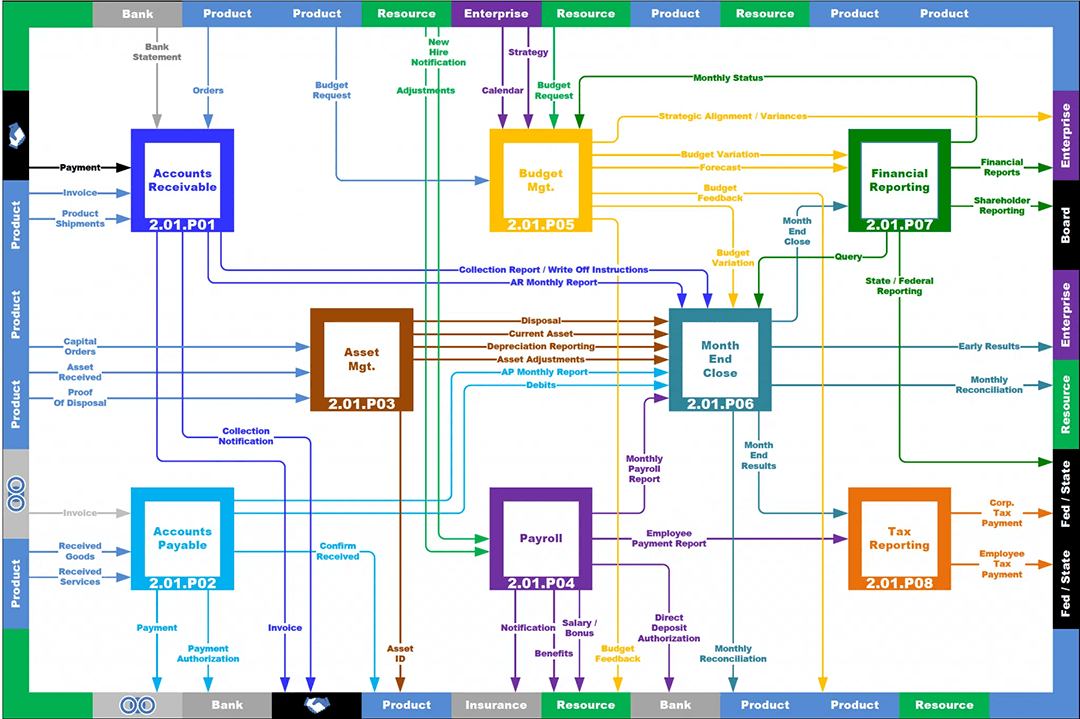"Strategy without process is like a head without the body."
When we begin work with new clients, we meet with senior executives to discuss what is important to them and their organization. This discussion, of course, includes strategy, major problems and frustrations, the current level of performance within each area of responsibility, and the development of a Business System Diagram. We also ask each executive what is important to their mission and what major goals they are trying to accomplish. One of the interesting outcomes that we find from these meetings is that when we discuss business processes within their area of responsibility, executives typically don’t know much about those processes. While most executives recognize the importance of business process management within an organization, very few can tell us much about those business processes and how well they are managed. From over 20 years of executive conversations in 300 enterprises, here is what we have learned about most organizations
Most business processes are broken.
1. They are too complex, cumbersome, informal, not well defined, missing necessary knowledge and information, not consistently followed, not measured, not owned, and not aligned to strategy.
2. Less than 20% of new client executives can correctly identify the business processes within their area of responsibility. They don’t know what or how many processes exist within their organization and they also don't know what purpose those processes serve.
3. Less than 10% of executives can name the correct customers of their business system or the customers of the business processes contained within their business system. Executives can readily name the enterprise customer in most cases but do not understand the series of customer relationships that contribute to that end customer’s perception of the enterprise.
4. Less than 5% of executives measure any type of meaningful process performance. Most organization performance measurement takes the form of KPI’s at the department level.
5. And finally, we know on average that <10% of all work is value-added. Most companies try to overcome process deficiencies with added layers of reviews, approvals, and bureaucracy.
What is a Business System Diagram (BSD)?
The Business System Diagram identifies all of the business processes within a business system, captures the relationships between those processes, and identifies customers and suppliers of both business processes as well as the total business system. We use with a twelve standard business system definition for all organizations including sales and Marketing, Customer Service, Operations, Procurement, Product Development, Finance, Human Resources, Information Technology, Facilities Management, Equipment Management, Enterprise Management and Improvement Management. This basic organizing structure can apply to any industry type and any business size.
What’s in the Business System Diagram?
Along with business processes, the Business System Diagram identifies several important additional elements for each process, such as process name, process owner, process purpose, the main process customers and suppliers, the main products and services of each process, the main inputs to the process and the primary measures. It provides a summary model for understanding the flow of work inside the larger business system. The BSD is not an IT architecture map. While information technology certainly has an impact, workflow is not just the IT component. IT encompasses all of the time, activity, and decision-making that contribute to executing the business system mission.
What purpose does the Business System Diagram serve?
The Business System Diagram provides a succinct view of the workflow and connectivity within a total business system. The BSD allows the senior executive to understand at a very high level how his or her area of responsibility works, what processes contribute most to the business system’s value proposition, and the overall efficiency and effectiveness of the business system.
What value does the Business System Diagram provide?
The BSD provides an executive summary of how work gets processed within the organization, how the performance of that work gets measured, and who is responsible and accountable for the components of the work. It is also frequently used to monitor the process improvement actions that contribute to the overall business system performance improvement. It is an invaluable tool for defining, monitoring and improving a business system. Because the BSD connects interrelated processes, the model provides a useful visual model for interactive process relationships that helps executives identify cause-and-effect impacts to overall business system performance.

Why a Business System Diagram should hang on your wall.
A 4 x 6 poster should be visible on the wall of every C-Suite executive’s office demonstrating the process flow of the business system within the executive’s area of responsibility. It should be in a form that can be easily marked-up as new ideas and new sources of thinking come into the office. Developing a BSD with a new group of executives always sparks lively dialogue that leads to new and substantial learnings and insight into the business. Every senior executive should have an active BSD that is understood, maintained, and utilized for continual business system improvement.
Further Reading: THE PERIGON METHOD

